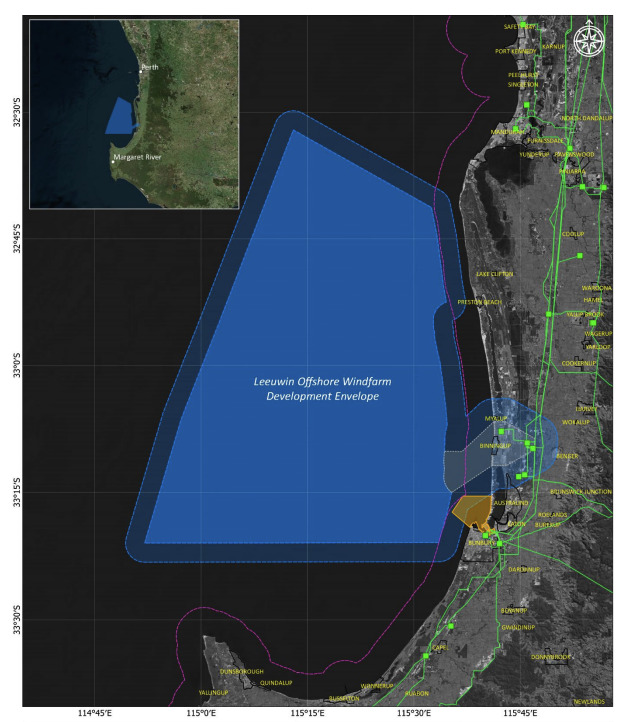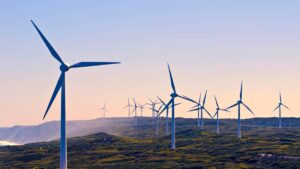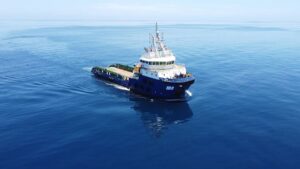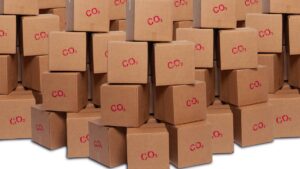Western Australia’s coastline could be home to the world’s biggest wind farm

In terms of power generation, the proposed Leeuwin Offshore Wind Project is the biggest in the world. Pic: Getty Images
Danish renewable energy developer, Copenhagen Energy, has ambitious plans to install 200 wind turbines off the coast of Western Australia between Mandurah and Bunbury, helping WA fast-track its path to decarbonisation and easing the states’ reliance on fossil fuels.
The massive 3GW offshore wind farm – dubbed the Leeuwin Offshore Wind Project – will generate enough electricity to power 3 million homes (more than 12 TWh) when fully operational.
‘The biggest in the world’
“As it stands today, the Leeuwin Offshore Wind farm is the biggest in the world in terms of the power generation,” Copenhagen Energy co-founder and CEO Jasmin Bejdic told Stockhead.
“However, technological developments are moving quickly in offshore wind such that larger wind farms are already being proposed in other parts of the world.
“Each turbine is expected to deliver between 15 MW and 25 MW and the size of each of these turbines will be around 280m tall, with a blade diameter of about 250m.
“The definitive number, final location, layout and ultimate turbine and platform specifications will be determined as the project progresses.”
Copenhagen Energy is developing several utility scale offshore wind projects in Ireland and Philippines totalling more than 11 GW of power but is particularly focused on offshore wind projects in Australia with proposals in place for the development, construction and operation of another three offshore wind farms in WA.

Headquartered in Carlsberg City in central Copenhagen, the company was founded in 2020 by Jasmin Bejdic and Andreas von Rosen, specialising in wholesale power trading in Europe and the development of offshore wind farms.
High wind speeds and favourable water depths
Bejdic, former head of European Energy and renewable energy entrepreneur with 15 years’ experience in project development, said the site – in Commonwealth Waters within Geographe Bay, around 15km to 70km from the coast south of Perth – was selected after a thorough selection study of the entire Australian coastline.

In the end, he said the southwest of WA was chosen based on a range of factors including high wind speeds, favourable water depths for boom fixed foundation, good access to port infrastructure at Bunburry and Kwinana, and suitable grid infrastructure which will allow electricity transmission into the Southwest Interconnected System.
Other aspects such as demand for green energy through decarbonisation of industry in the southwest, proximity to a skilled workforce, low risk of extreme weather or cyclones, and rapid commitment to the development of policy and regulatory framework also came into play.
Construction kicks off in 2026
Onshore and offshore construction is scheduled to start in the first quarter of 2026, with first power expected in 2028, pending all necessary government approvals.
“We are at the start of a comprehensive assessment process, and we are committed to doing everything required to make this project a success,” Bejdic said.
“Our research indicates that Western Australia is at a critical supply challenge where a major investment in network infrastructure is required for the Southwest Interconnecting System – we want to be part of the solution.”
From 2020, renewables such as large-scale offshore wind farms to supplement both utility-scale and distributed energy needs have been discussed by organisations such as the Australian Energy Market Operator.
Currently, the largest wind farm in WA – the Yandin Wind Farm near the wheatbelt town of Dandaragan north of Perth – produces only around 214MW of power with renewable energy accounting for 24pc of Australia’s total energy production between 2020-2021.
The proposal for the Leeuwin Offshore Wind Project is the fifth being put forward for development off the Western Australia coast.
Others include Australis Energy’s 300MW project near the coast north of Myalup, Oceanex’s 2GW Bunbury wind farm north of Dunsborough, Flotation Energy’s 500MW wind farm south of Rottnest, and a 1.1GW project by Pilot Energy and Triangle Energy.
Helping Australia meet net-zero targets
According to the latest International Panel on Climate Change (IPCC) report, climate change has already altered terrestrial, freshwater and ocean ecosystems at a global scale, with multiple impacts evident at regional and local scales.
Impacts are evident on ecosystem structure and timing of seasonal life cycles.
“Reports developed all over the world are stressing the need to quickly reduce emissions to stop the impacts of climate change,” Bejdic added.
“We want to be part of this journey in helping Australia hit net-zero targets.”
Related Topics
UNLOCK INSIGHTS
Discover the untold stories of emerging ASX stocks.
Daily news and expert analysis, it's free to subscribe.
By proceeding, you confirm you understand that we handle personal information in accordance with our Privacy Policy.








